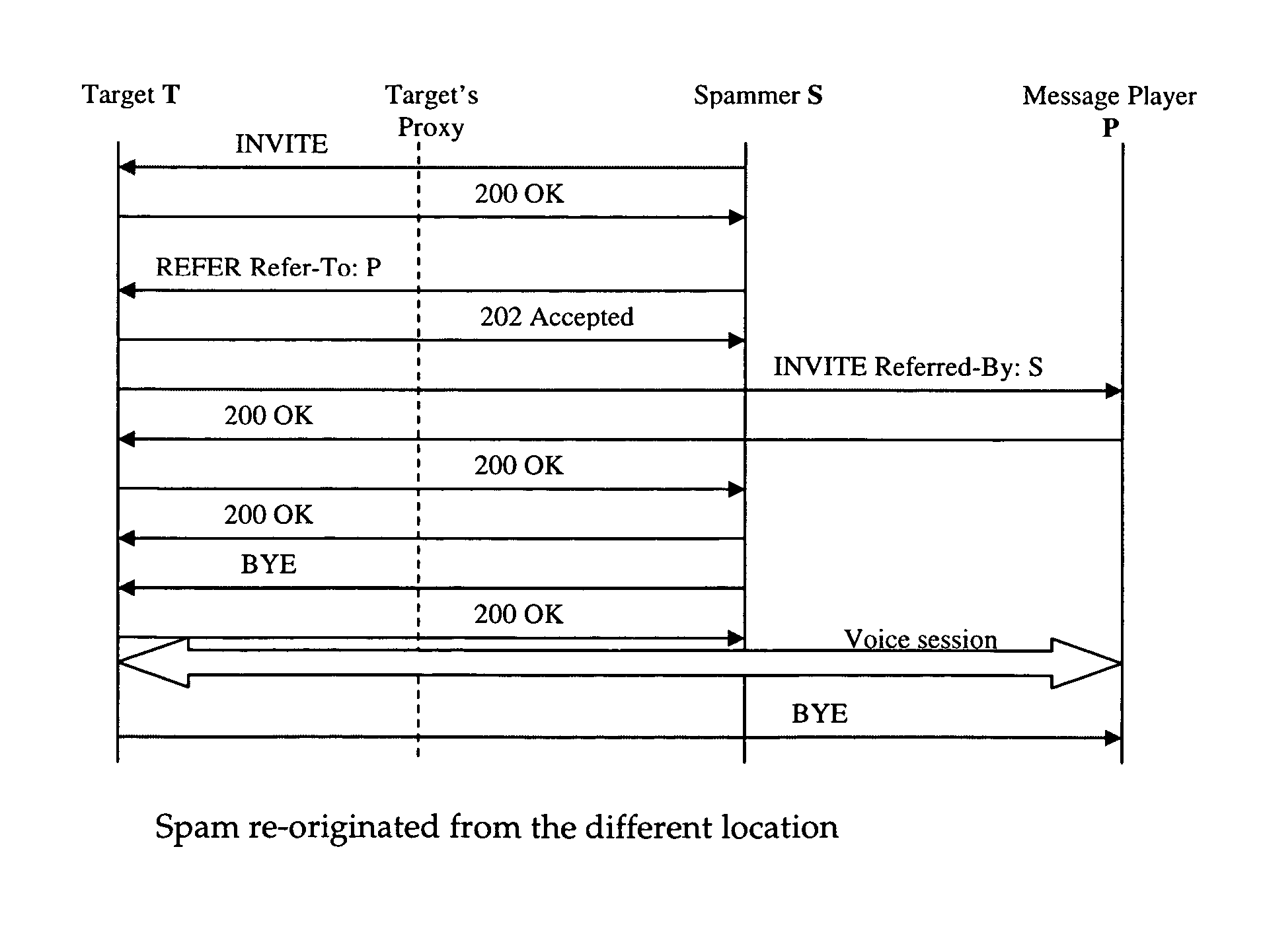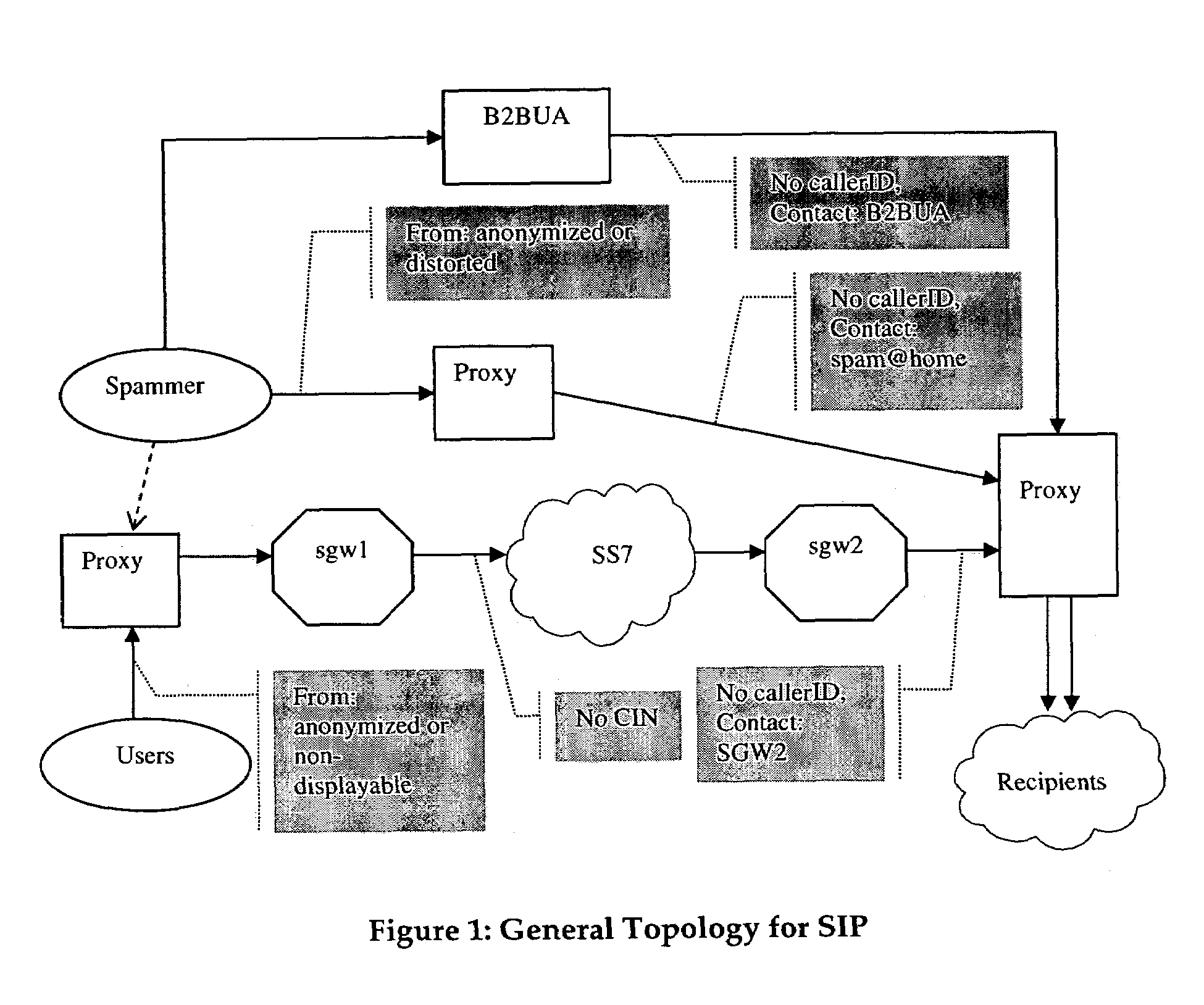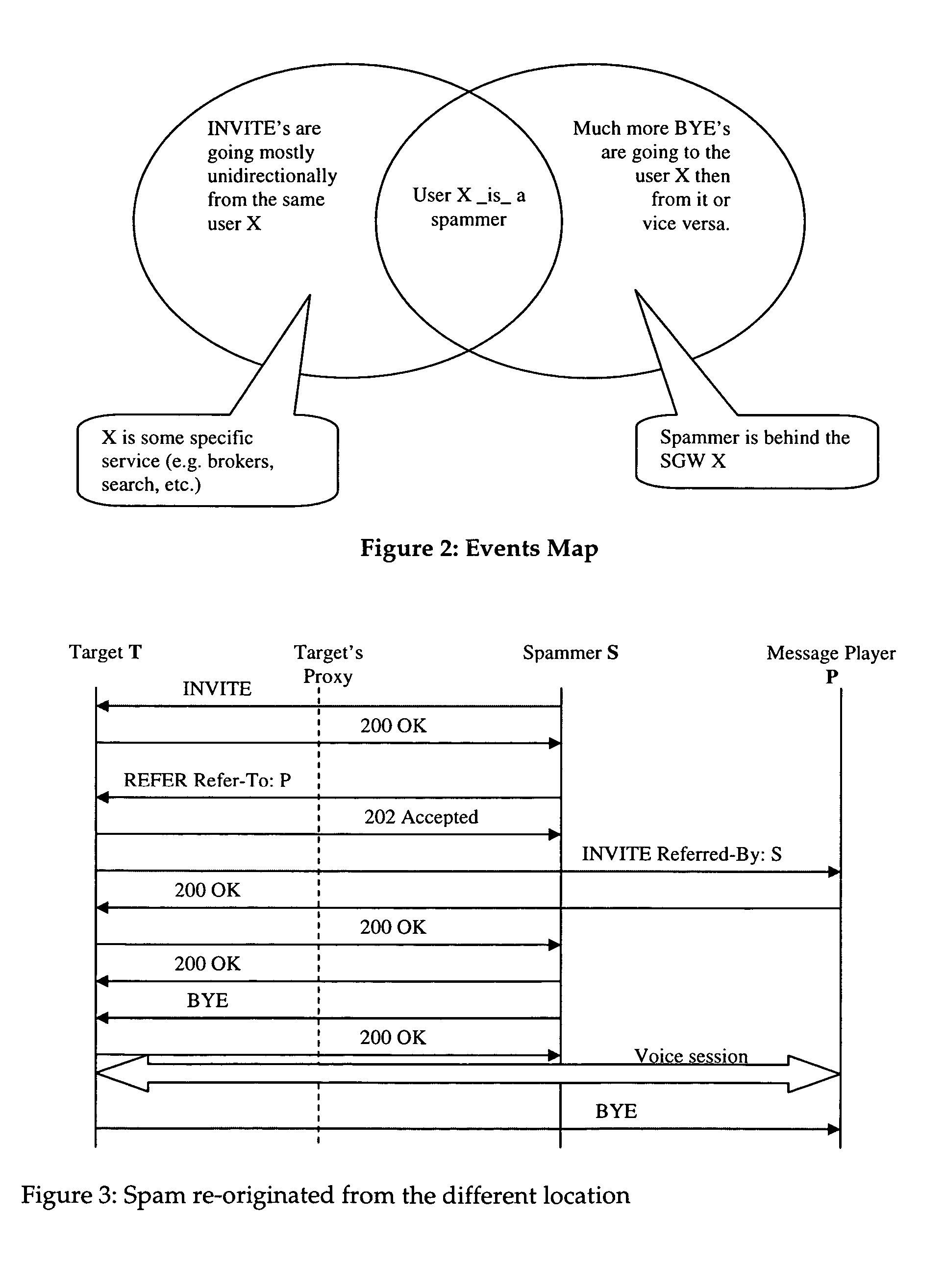Detection and mitigation of unwanted bulk calls (spam) in VoIP networks
a technology of bulk calls and voip networks, applied in the field of interactivity communication services, can solve problems such as abuse, users of e-mail services over ip are constantly being bombarded with unsolicited correspondence known generally as spam, and users of the ubiquitous pstn are bothered by unsolicited telephone calls from telemarketers
- Summary
- Abstract
- Description
- Claims
- Application Information
AI Technical Summary
Benefits of technology
Problems solved by technology
Method used
Image
Examples
Embodiment Construction
[0020]FIG. 1 illustrates an example topology for a session initiation protocol (SIP) deployment architecture. This figure illustrates a number of possible scenarios for a spammer to direct calls to the recipient group. As shown a spammer using a proxy server can call directly to the proxy server at the edge of the recipient or targeted network. In this case the spammer's identity may be anonymized or distorted so as not to provide a true caller identification.
[0021]Using a B2BUA a spammer is able to invoke privacy measures to avoid providing identifier information. A further scenario is one in which spammer's call is routed through the PSTN, in which case the caller may be identified by an intermediate signaling gateway ID.
[0022]The solution that is proposed here is based on the statistical characteristics of the VoIP signaling messages when a spamming scenario occurs. In one common scenario a Spammer is the one who initiates the calls to the targeted network, but almost nobody init...
PUM
 Login to View More
Login to View More Abstract
Description
Claims
Application Information
 Login to View More
Login to View More - R&D
- Intellectual Property
- Life Sciences
- Materials
- Tech Scout
- Unparalleled Data Quality
- Higher Quality Content
- 60% Fewer Hallucinations
Browse by: Latest US Patents, China's latest patents, Technical Efficacy Thesaurus, Application Domain, Technology Topic, Popular Technical Reports.
© 2025 PatSnap. All rights reserved.Legal|Privacy policy|Modern Slavery Act Transparency Statement|Sitemap|About US| Contact US: help@patsnap.com



